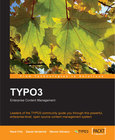Liquidity Management
A Funding Risk Handbook

Book Details:
| Publisher: | John Wiley & Sons |
| Series: | Wiley , Handbook |
| Author: | Aldo Soprano |
| Edition: | 1 |
| ISBN-10: | 1118413997 |
| ISBN-13: | 9781118413999 |
| Pages: | 208 |
| Published: | Apr 03 2015 |
| Posted: | Apr 17 2017 |
| Language: | English |
| Book format: | |
| Book size: | 1.84 MB |
Book Description:
Robust management of liquidity risk within the changing regulatory framework Liquidity Management applies current risk management theory, techniques, and processes to liquidity risk control and management to help organizations prepare in case of future economic crisis and changing regulatory framework. Based on extensive research conducted on banks datasets, this book addresses the practical challenges and critical issues that frequently go unmentioned, and discusses the recent impact of sovereign crises on banks liquidity processes and approaches. Market practices and regulatory stances are reviewed and compared to bank treasuries response to liquidity crunches, refinancing risks are explored in the context of Basel 3, and alternative funding is analyzed in terms of resilience and allocation. Coverage includes the recent crisis, new regulations, and the techniques, processes, and strategies banks use in managing liquidity risk. The 2008 and 2010 crises brought liquidity risk out of the shadows as even profitable and wellcapitalized banks were swept away with breathtaking speed. This book reviews modeling and internal process design in the context of the structural change in market conditions on banks refinancing and control requirements, helping readers rethink and redesign their organizations approach to liquidity risk. Understand the new liquidity regulatory framework and the implications for banks Study the latest liquidity measurement models, with stress testing and scenario analysis Discover the effect of illiquid financing markets and possible lasting impacts Compare market liquidity and warning signals that detect further deterioration With much of the world still reeling from history, its important that liquidity risk become a major focus going forward. This practical guide provides valuable information, but also real, actionable steps that can be taken today to forecast and mitigate risks with an eye toward greater stability and security. Liquidity Management is a thorough, comprehensive guide to a more robust management of liquidity risk.
Download Link:
Related Books:
TYPO3 Enterprise Content Management
Leaders of the TYPO3 community guide you thorough this powerful, enterprise-level, open source content management system
TYPO3 is a popular, free, feature-rich open source content management system. It has the flexibility and scalability to more than match commercial systems and allow you to build a powerful and complex website. This book is the guide for all users of this powerful application. Written by experts and members of the core development team of TYPO3, this book is all you need to build, customize, and deploy TYPO3 websites. This book is aimed at both new and experienced users of TYPO3. Users, administrators, and developers of TYPO3 will all benefit from this comprehensive and authoritative guide....
Security Risk Management
Building an Information Security Risk Management Program from the Ground Up
The goal of Security Risk Management is to teach you practical techniques that will be used on a daily basis, while also explaining the fundamentals so you understand the rationale behind these practices. Security professionals often fall into the trap of telling the business that they need to fix something, but they can't explain why. This book will help you to break free from the so-called "best practices" argument by articulating risk exposures in business terms. You will learn techniques for how to perform risk assessments for new IT projects, how to efficiently manage daily risk activities, and how to qualify the current risk level for presentation to executive level management. While other books focus entirely on risk analysis methods...
Digital Asset Management
Content Architectures, Project Management, and Creating Order out of Media Chaos
Digital Asset Management: Content Architectures, Project Management, and Creating Order out of Media Chaos is for those who are planning a digital asset management system or interested in becoming digital asset managers. This book explains both the purpose of digital asset management systems and why an organization might need one. The text then walks readers step-by-step through the concerns involved in selecting, staffing, and maintaining a DAM. This book is dedicated to providing you with a solid base in the common concerns, both legal and technical, in launching a complex DAM capable of providing visual search results and workflow options.Containing sample job models, case studies, return on investment models, and quotes from many top digital asse...
2007 - 2021 © eBooks-IT.org



